
[caption id="TheLatestBooksAboutBritain_img1" align="aligncenter" width="335"]
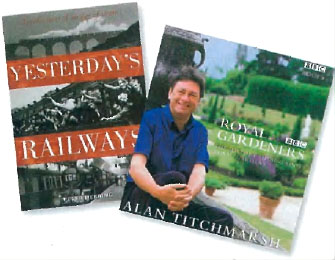
Yesterday’s Railways, by Peter Herring, a David & Charles Book, distributed in North America by F&W Publications, Inc., 1507 Dana Avenue, Cincinnati, Ohio 45207. Tel: 513-531-2222. 288 pages. Hardcover $34.99.
ANYONE WITH EVEN A PASSING INTEREST in trains has heard of The Flying Scotsman, the classic British steam train that still makes tours of southern England and that once even made a tour of the United States, and The Flying Dutchman, another venerable British train. But few people outside of England know that one of the first train engines was successfully built and run by its inventor, the Englishman George Stephenson, in 1814.
Although author Peter Herring does not cite the latter fact in his excellent coverage of 20th-century British trains, he does mention one train named for George Stephenson, plus the train engine-building company he and his son founded, Robert Stephenson & Company, the first true makers of trains.
But the best stories relating to Britain’s trains involve the immense pleasure people have taken and still take in riding them. During the 20th century, everything from coal, iron, and troops, to milk, workers, vacationers, mail, newspapers, and racing pigeons travelled on them. (In the last case, “pigeon specials” carried pigeons to the startup of races, in style.) Many Brits still travel by train, including Londoners, the latter often via the still-famous Underground that was used for air-raid shelters during World War II.
Different systems within the nation have laid claim to different specialties: the Eastern and Western regions, for instance, named their trains the most memorably, from the Red Dragon linking London and Cardiff, to the Mayflower, by which Plymouth’s connections with the Pilgrim Fathers were commemorated—the same Mayflower that replaced the venerable Flying Dutchman in 1957.
As for boat trains, which linked Britain to Ireland, Paris, and the rest of the world, the very famous and less famous travelled on them regularly. On 16th December 1951, the London-Paris service made the only unscheduled stop in its history, when passengers were shocked to realize that their boat train had made a stop at Sevenoaks Tubs Hill Station in Kent to take on Prime Minister Winston Churchill, who lived nearby at Chartwell, and who believed the boat train was the most convenient and civilized way of journeying to a meeting in Paris.
This book’s 12 chapters run the rails in good shape and include “The Golden Age,” “Stations and Signals,” “Famous Locomotives,” “Delivering the Goods,” “Railways at War,” and “Railways for Fun,” prior to including the story of the demise of steam trains, “Out of Steam,” which Herring says occurred around 1968, when diesel and electric engines came on strong. The world may be sadder for that, but still pleased to travel by train, when the mood and need arise.
—DAVID J. MARCOU
The Pythons: An Autobiography of the Pythons, by Graham Chapman, John Cleese, Terry Gilliam, Eric Idle, Terry Jones, and Michael Palin with Bob McCabe. Thomas Dunne Books, New York 10010. 360 pages. Hardcover $60.
THIS IS A GREAT BIG BOOK, perhaps as big as the one about how to put your budgie down. (“Apparently, you can either hit them with the book, or you can shoot them there, just above the beak,” as Mrs. Premise told Mrs. Conclusion.) Those who understand that reference will want to read the somewhat redundantly titled The Pythons: The Autobiography of the Pythons. Anyone else might find that this is not a book for reading, it is a book for putting down and avoiding. It provides an in-depth, up-close-and-personal look at Monty Python’s Flying Circus, the BBC television show that has inspired almost cultlike devotion since it first aired in 1969. Mention “The Lumberjack Song” or “Spam” or “The Spanish Inquisition” anywhere around the world, and someone will begin reciting those classic skits, probably in an excruciating faux-British accent. I know, because I am one of those people, and I found The Pythons to be fascinating reading.
There was no Mr. Python, of course, only Graham Chapman, John Cleese, Terry Gilliam, Eric Idle, Terry Jones, and Michael Palin. Gilliam, the man responsible for the show’s anarchic animations, was the group’s sole American. He began his career doing magazine work. The others received their comic training at Oxford and Cambridge and honed their talents in a number of television shows—among them Do Not Adjust Your Set, We Have Ways of Making You Laugh, and The Frost Report. In 1969 the BBC’s Barry Took had the idea of putting all these tested television veterans together in their own show. They almost called it Bunn, Wackett, Buzzard, Stubble and Boot until the BBC put its foot down and recommended Flying Circus. “Monty” and “Python” arrived soon afterwards. The rest, as they say, is hysterical. After four seasons of the TV show, the Pythons branched off into movies (including Monty Python and the Holy Grail and Life of Brian), live tours—where they were received like rock stars—books, and records as well as their own individual projects. Their intelligent, surreal, and subversive humour remains an important influence on modern comedy.
The Pythons relates this saga with the Pythons’ own words. Graham Chapman, who is “inconveniently dead,” tells his story through previously published material and interviews with family members and his long-time companion, David Sherlock; otherwise all the Pythons contributed their own recollections and interpretations, with occasional excerpts from the diaries of Palin and Jones. Sometimes this approach becomes repetitious in a Rashomon kind of way, but it creates a truly intimate and conversational look at the creative process and at the occasionally strained relationships among the Pythons. The book is also lavishly illustrated, although randomly captioned.
The great enigma is Chapman, the only gay Python and—because he died of cancer in 1989—the only dead one. Until he dried out before filming Life of Brian, Chapman was a heavy drinker who often forgot his lines, to everyone’s frustration. “He was always the one I was least easy with because I never knew what was going on in his head—strange man,” Terry Gilliam says. Palin, who was so easygoing the others vividly remember the one or two occasions when he actually lost his temper, gets my vote for the nicest Python. Cleese, whose later work in Fawlty Towers and the Harry Potter and James Bond films (as R) made him the troupe’s best-known member, comes off as its most aloof. Overall, though, despite the occasional squabbles, the book’s tone remains affectionate, if frank. “For all the backbiting and all the nonsense, we really do like each other!” says Gilliam. Maybe that’s why they were so good at making each other—and the rest of the world—laugh.
—TOM HUNTINGTON
The Royal Gardeners: The History of Britain’s Royal Gardens, by Alan Titchmarsh, published by BBC Books and distributed in the U.S. by Trafalgar Square, North Pomfret, Vermont 05053. www.trafalgarsquarebooks.com. 192 pages. Hardcover $40.
DURING THIS “YEAR OF THE GARDEN” (see page 10), what could be more appropriate than a royal tour of Britain’s most beautiful gardens? Trouble is, the bill for such a dream journey could easily imperil our children’s inheritance. Even then, how could you possibly travel back in time to view the grand horticultural triumphs of ages gone by? Without such a historical perspective, any tour of Britain’s great gardens would be only a snapshot—a brief moment in a long evolution of trends and trendsetters.
This companion book to the BBC series provides a convenient alternative. The author, himself a leading British gardening expert, acts as tour guide and introduces readers to many of Britain’s royal gardens from the time of William the Conqueror right up to the current Prince of Wales’exhibitions at the Chelsea Flower Show. A perfect balance of text, photographs, botanical prints, and other illustrations make this a journey well worth making.
And surprisingly exciting. In his introduction Alan Titchmarsh sets the pace and prepares his readers for a more heart-pounding story than many might imagine: “If you always hated history at school, take comfort from the fact that wars and politics don’t get a look-in (except when they directly impinge on gardening), and dates are kept to a bare minimum, so read on in complete confidence.
“But if you are expecting nothing but regal hearts and flowers, gentle romance and pastoral idylls, be warned—royal garden history is packed with intrigue, skullduggery and dirty doings.”
Consider, for example, the plight of gardeners during the Commonwealth period, a topic not likely to be mentioned in most histories. Royal gardens, being royal, were mostly in the care of supporters of the King. The Parliamentarian victory persuaded many of the owners of these gardens to, flee to the Continent. Cromwell, fueled by a puritanical disdain for anything smacking of luxury or frivolity, destroyed many gardens during his brief rule. In the end, though, the temporary exile of the royal gardeners helped to enrich Britain’s horticultural tradition, as the gardeners who returned home following the Restoration brought back new ideas learned in Europe.
Perhaps most enjoyable of all is the sheer variety of trivia, which, while not really of any practical use to modern gardeners, provides some fascinating perspectives on challenges faced by our green-thumbed forebears. Gardeners of today can choose from 90,000 varieties of plants, for example, but 12th-century gardeners knew of only 200. The revelation that medieval gardeners cut grass only about twice a year made me ponder who shouldered the heavier burden: the ancient gardener armed with a scythe, or the modern gardener equipped with a riding mower but condemned to drive it almost daily!
Against such minutiae, Titchmarsh also weaves in the famous names of gardeners such as “Capability” Brown and Gertrude Jekyll, explorers the likes of Joseph Banks and the Tradescants, and of course the gardens themselves, such as Kew and the Chelsea Physic Garden. In all, this is truly fertile ground in which to spend some pleasant hours cultivating a love for one of Britain’s great national passions.
—BRUCE HEYDT
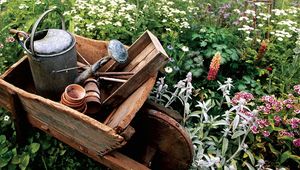
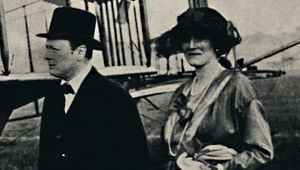

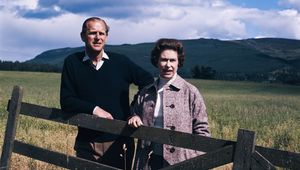
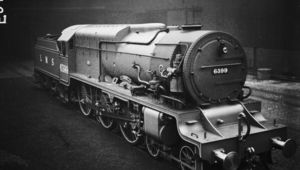
Comments